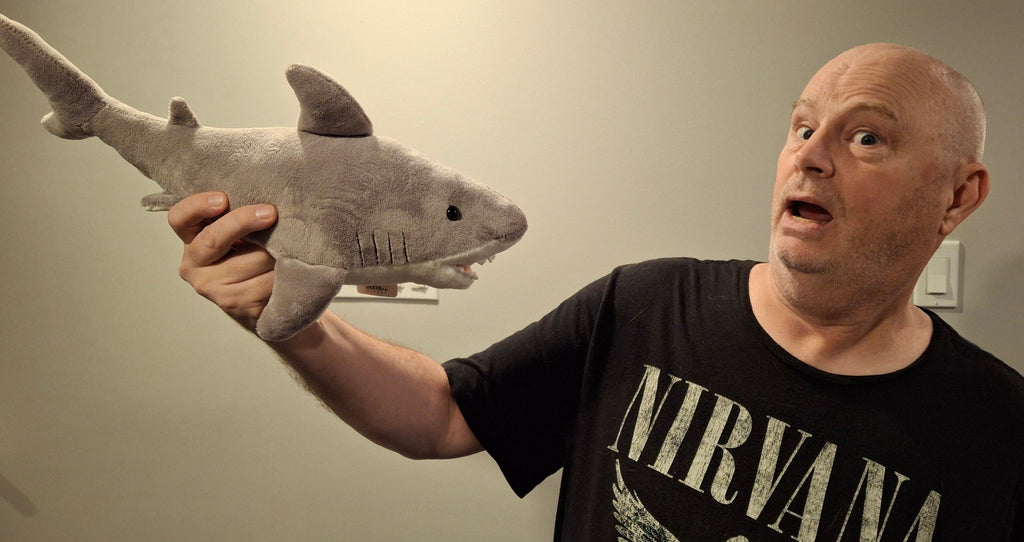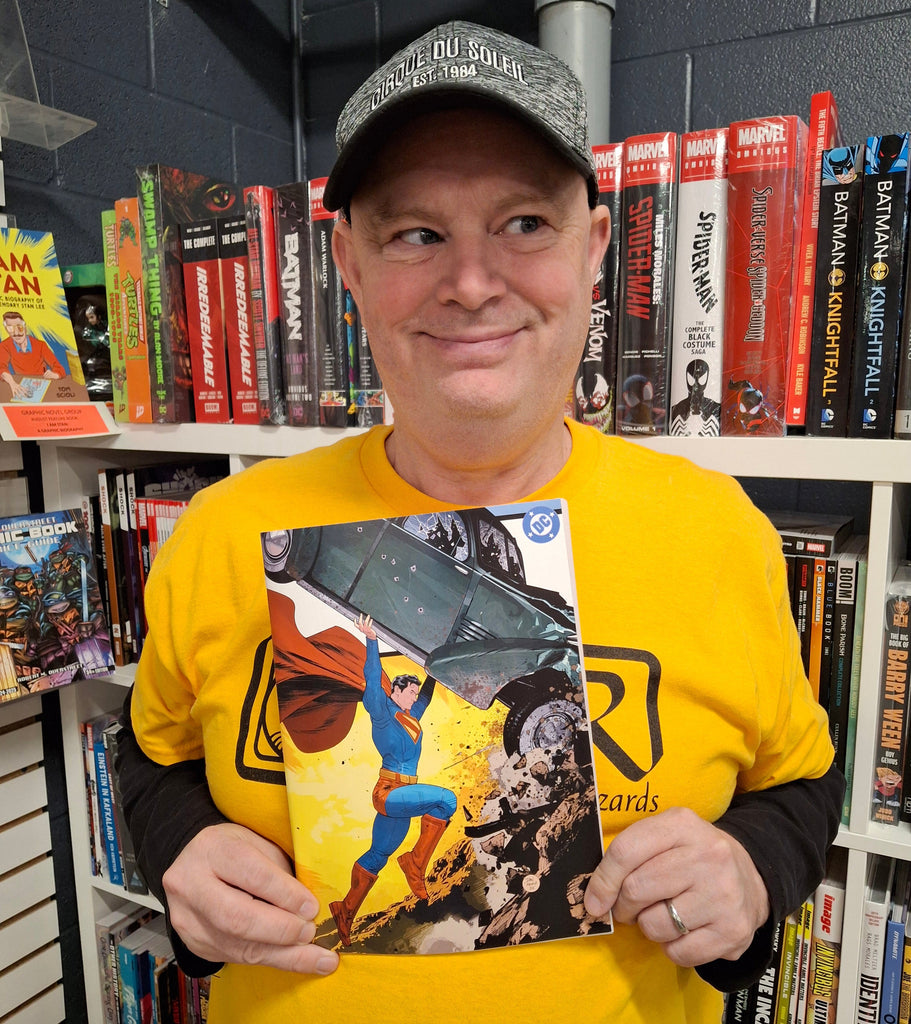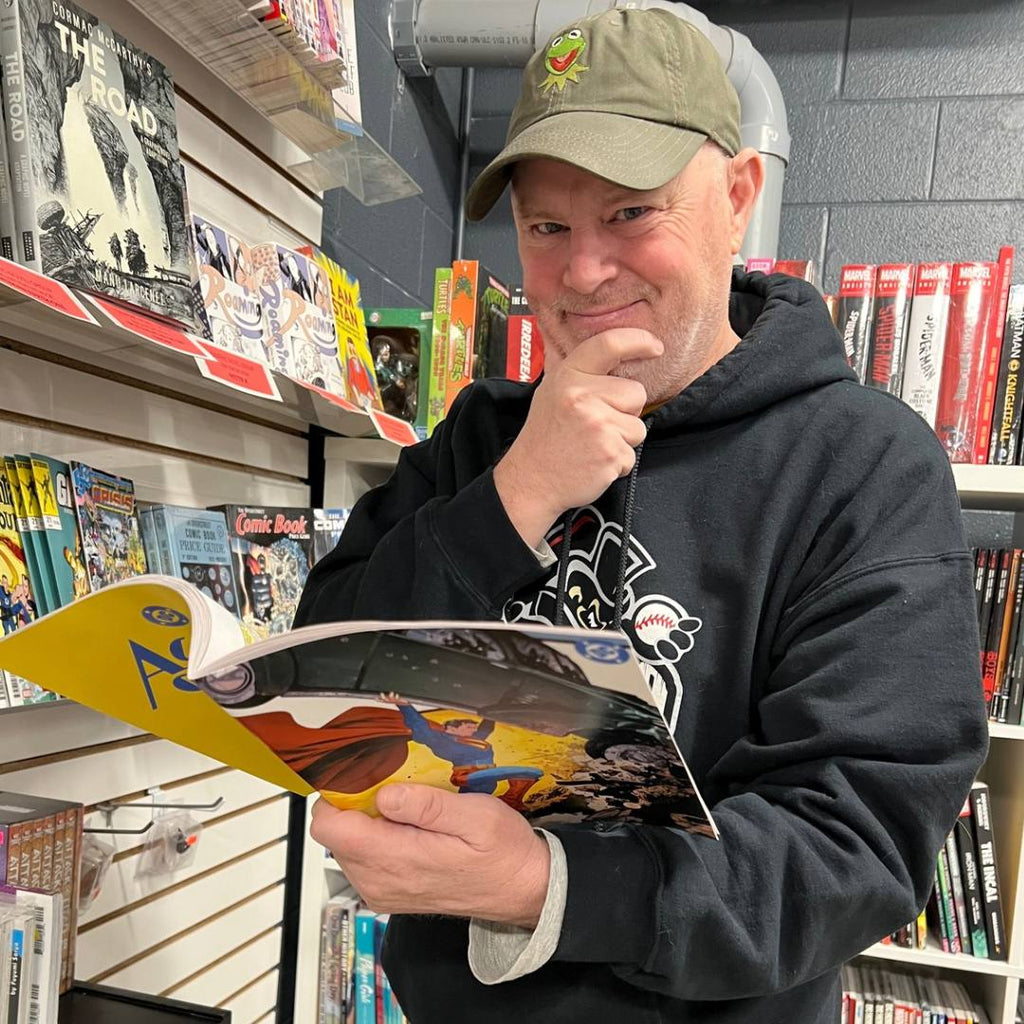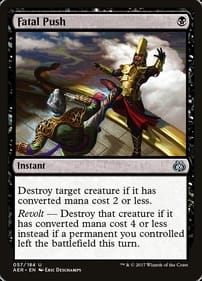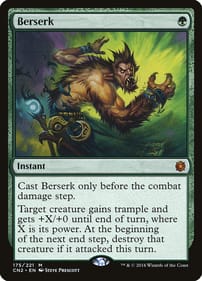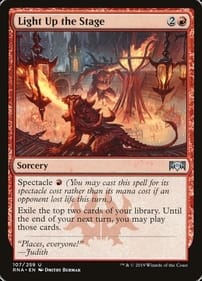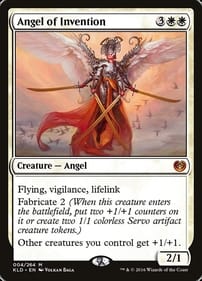Why Not AI Actors?
By Dan Brown One AI-generated actress tries to get an agent, and all of sudden Hollywood loses its mind. That’s what happened over the last couple weeks when the company behind Tilly Norwood, the AI performer, shopped its creation around Tinseltown to talent agencies in hopes of attracting representation – as reported in outlets like the Hollywood Reporter. Tilly buys iced coffee on the street. Tilly has money problems. And even though Tilly has an Instagram account like other celebrities, she’s not a real person. It’s a character, a program that could even be a useful tool in the hands of the right filmmaker. (Tilly also waves a lot, I think to show that her hands don't have any extra digits.) Among those speaking out against Norwood was SAG-AFTRA, the union that represents the human actors who appear in movies and on television in the U.S. “It has no life experience to draw from, no emotion and, from what we’ve seen, audiences aren’t interested in watching computer-generated content untethered from the human experience,” the union huffed in a statement, “It doesn’t solve any ‘problem’ — it creates the problem of using stolen performances to put actors out of work, jeopardizing performer livelihoods and devaluing human artistry.” Does this union know anything about movie history? At its most basic, Tilly Norwood is just the latest special effect in an industry whose trade is making unbelievable things look real. And computer-generated characters have been on our screens since at least the early 1990s, when George Lucas used them as background actors in The Young Indiana Jones Chronicles, paving the way for his Star Wars prequel trilogy. It’s funny, because when Lucas debuted the character Jar-Jar Binks in 1999’s The Phantom Menace, I remember a lot of griping about the Gungan by critics, but no one complained the alien was putting anybody out of work due to his being a CGI creation. Animation itself goes back several decades deeper into the past. Has SAG-AFTRA ever objected that Foghorn Leghorn was a danger to its members? As for the charge that Norwood was trained on the performances of human actors without compensation, that holds water. It’s also what flesh-and-blood performers have been doing since acting was invented. Did Christian Slater ever pay Jack Nicholson for being the basis of his character in the 1988 film Heathers? No, because there’s a time-honoured tradition that younger actors study classic performances – by Nicholson, Marlon Brando, Meryl Streep, Al Pacino, take your pick – and then swipe the mannerisms of their elders, incorporating them into their own work. No doubt the union heads are working on a way to outlaw that “theft,” too. Also, I hate to break it to SAG, but agreeing to represent an AI isn’t the sleaziest thing a Hollywood agent has ever done to make a buck. Me, I’m old school. I happen to believe no AI or CGI or any other character brought to life by means of technological trickery will ever be able to approximate what the best actors can do on the movie or TV screen, or on stage for that matter. From what I’ve seen so far, they won’t even be able to come close. But if audiences decide they want to watch Tilly Norwood over the real thing, who am I to say they’re wrong? Here’s a novel idea: Let’s let the market decide. Dan Brown has covered pop culture for more than 33 years as a journalist and also moderates L.A. Mood’s monthly graphic-novel group.
Jaws is a Classic Because Spielberg was Powerless
By Dan Brown As you may have already heard, this summer marks 50 years since the release of Steven Spielberg’s Jaws, the motion picture that ushered in the age of the blockbuster. It was in 1975 that the great white shark of the title started his long career of gnawing on skinny dippers, water skiers, power cables and even a helicopter. Luckily for us movie fans, the original Jaws was made by Spielberg back when he had no power in Hollywood. The limits placed on him by the constraints of the studio system boxed him in, and indirectly made the movie a commercial and critical success. Moviegoers couldn’t get enough of Jaws that summer. It would eventually spawn three sequels. This lack of freedom forced the then-young filmmaker to make some daring creative choices. Sure, during the troubled shoot on Martha’s Vineyard he had a fancy mechanical shark to play the part of the monster. But the primitive robot proved unreliable. What Spielberg did in response flew in the face of moviemaking logic. Instead of using the rubbery-looking faux fish in the attack scenes, he took a page from Alfred Hitchcock’s bag of tricks and shot around the shark, intending to rely on the power of suggestion. Those who had seen the shower scene in Hitchcock’s 1960 thriller Psycho swore that they had been witness to a knifing in which flesh was violently ripped open; the truth was that no such shots existed – based on the rapid shower montage, the brains of viewers supplied the missing visual information, and they thought they saw a blade tearing through skin. Spielberg followed suit, aiming to achieve the same effect. What you have to bear in mind is that, back in the 1970s, the standard practice in Hollywood was to give ticket buyers a good look at the monster, putting the full special-effects budget on the screen in front of them. That’s the way things were done. What Spielberg didn’t have was a realistic shark (which becomes apparent in the film’s third act aboard Quint’s boat) but the special effect he did have was the minimalist score written by John Williams. Two notes. That’s all Spielberg had going for him. Added to the suggestive footage in which the shark didn’t appear, it worked. Spielberg’s audacious decision to hide the undersea attacker was a masterstroke. The suspense of not seeing the shark but being overpowered by the Williams score led to a lot of real anxiety – people in 1975 really were afraid to go in the water, even if it was a body where sharks don’t reside, like the backyard swimming pool. Viewers saw it again and again. It’s true Universal Pictures upped Spielberg’s budget as the hell shoot dragged on, and the gamble paid off handsomely for the company. But his hands were tied in so many other ways, a consequence of working within Old Hollywood. Studios didn’t like to take chances. And there was a real sense of shame if a filmmaker made an ostentatious flop, which Spielberg experienced when his disastrous 1941 was released four years later. (Late-career George Lucas is a telling counterpoint to early-career Spielberg. Lucas earned all the power he wanted to make films his own way, cutting the studios out of the power dynamic, and the result was . . . Jar-Jar Binks. Lucas made his best movies within the studio system.) The wheels falls off Jaws in the last half-hour or so, when the shark wriggles up onto the deck of the Orca. It was a laughable moment, and it’s a testament to the power of the film up to that point that the audience didn't hold it against Spielberg. Quint’s powerful monologue was clearly still echoing in their minds when Bruce is revealed. Some critics argue Jaws also tapped into the post-Watergate disenchantment of the times. The Amity mayor who ignores Brody’s entreaties in the first film to close the town’s beach is still mayor in Jaws 2, launching a million jokes about the importance of voting in municipal elections. All of which brings up the obvious question: Are there any movies from the summer of 2025 that will be celebrated a half-century from now, as Jaws was feted this summer? It feels like that’s a long shot. Instead of grassroots word-of-mouth, which propelled Jaws, the practice now seems to be for a studio to give even a half-baked release a $100 million marketing budget with the goal of winning the opening weekend before word gets around on social media, killing a mediocre picture’s earning potential. Dan Brown has covered pop culture for more than 32 years as a journalist and also moderates L.A. Mood’s monthly graphic-novel group.
Are We Over Origin Stories?
By Dan Brown SPOILER WARNING! This column contains plot points from the movies Fantastic Four: First Steps and Superman, both currently in theatres, so if you haven’t seen them yet and you value surprise, stop reading here. Is this a trend in the making? If you’ve seen this summer’s big superhero movies – I’m thinking of The Fantastic Four: First Steps and Superman specifically – you may have noticed something essential was missing from both motion pictures. The secret origin. Traditionally a staple of superhero movies, and the comics that spawned them, most DC and Marvel comic series have a common starting point. They explain up front, to satisfy the audience’s craving for continuity, how the hero came to possess their unusual abilities. How they go from mere mortal to crime-fighting powerhouse. So up until now, the launching-off point for these stories was the origin. In the 1978 Superman film, for example, a significant portion of the first hour is given over to showing life on Krypton before it exploded, including details about Kryptonian politics that wouldn’t pay off until Superman II. We see the future Clark Kent as he is dispatched from the doomed planet, years before he would don his red-and-blue costume to do battle with the likes of Lex Luthor. It’s the same with other superhero movies, such as 2002’s Spider-Man. That film, and the reboots that followed, gave viewers a good look at the events that birthed the title character. This summer’s Superman, however, does not start the same way. Krypton is never depicted, in fact, the movie jumps ahead to the point on the Superman timeline when Clark is dating Lois, and she already knows his secret identity. The same goes for First Steps. The story kicks off four years after Reed Richards and his crew of astronauts were bathed in cosmic rays, giving them weird powers. The movie begins not with their origin, but with Sue Richards finding out she’s pregnant with the couple’s son, so it’s Franklin’s origin that’s stressed. Neither film dwells on the secret-origin part, which is a startling development when you take into account how many filmmakers have felt obliged to put, say, Batman’s secret moment of inception on the silver screen. Sometimes it feels like Bruce Wayne’s parents will never get out of that alley, and Peter Parker has been bitten by an infinite number of radioactive spiders. In comics, there’s been much experimentation with this storytelling staple. Consider that in Action Comics No. 1, the Man of Steel’s origin was related in one page. Then compare that to the 1987 Batman: Year One storyline, which explained the Dark Knight’s beginnings over four issues. The makers of Captain Canuck waited until issue No. 5 to reveal to fans how Tom Evans had been zapped by an alien ray, doubling his strength. At their root, secret origins satisfy the reader’s need for continuity by explaining what happened before the first issue and answering the question, “Why does Batman hate criminals so much that he wages an unending war on them?” to name one example. Marvel impresario Stan Lee, perhaps weary after having to come up with so many origin stories in the 1960s, invented a whole class of characters – mutants – who had no origin story. X-Men like Cyclops, Marvel Girl, and Iceman were all born that way. The telling part is while some movie reviewers noticed what was missing from First Steps and Superman, none have complained that the omission made either of these films worse. Judging by online comments, ordinary fans don’t seem to mind, either. Have we reached some kind of watershed moment in the history of the superhero genre? Has fandom gotten over origin stories? The critical consensus seems to be that, after a period of lacklustre DC and Marvel films, this summer’s superhero offerings have reversed the downward trend in quality. Are moviegoers in 2025 more sophisticated than previous audiences? Are we witnessing the birth of something new? If you have any theories, I'd love to hear them in the comment box below! Dan Brown has covered pop culture for more than 32 years as a journalist and also moderates L.A. Mood’s monthly graphic-novel group.
But What About the Movie?
By Dan Brown Movie advertising in 2025 is about everything but the movie. What I mean is, the folks in Tinseltown who devise campaigns to advertise big-budget motion pictures, like the latest Mission: Impossible and the upcoming Superman, want the public to be aware of some important details – that have little to do with the content of each film. Why is this a problem? Because Hollywood isn’t exactly doing blockbuster business in the age of streaming. Let me make clear at the outset that I’ve never worked in marketing: This is a civilian take from someone who has never made a movie ad or trailer in his life. All I’m basing my thoughts on are my decades of experience as a moviegoer and movie fan. Let’s start with the obvious example, the publicity campaign for Mission: Impossible – The Final Reckoning, which landed in theatres last month. Whether you’ve seen it yet or not, you already know one thing about this sequel – that Tom Cruise did his own stunt work. You know this factoid because long before Cruise appeared at the Cannes Film Festival or on TV chat shows, Cruise was bragging about it in online clips that appeared while he was still on location two years ago. What he didn’t talk about while hanging off a brightly coloured biplane was the movie’s premise, or his acting in it, or the script. Or any other detail. Doing his own stunts may be a foolish thing for an actor to do, I don’t know, but I do know it’s an odd claim to make since an action star risking certain death in real life and Cruise’s character risking his on-screen life are two different things. What are we supposed to do with this knowledge? Or think of it this way: Did anyone who bought a ticket to see Final Reckoning walk out of the theatre and say to their date, “That movie was pretty mediocre, but I’m just glad knowing Tom Cruise risked life and limb to make it.” As Peter Suderman over at Reason magazine said in his review, the Mission: Impossible films are “ extravagant stunt spectacles, powered by the awe of watching an aging movie star appear to risk his life for our entertainment.” Not by the plot, or the camera work, or anything else intrinsic to the movie. Another example. As Cruise did, many movie actors appear on TV shows like The Tonight Show Starring Jimmy Fallon to drum up interest in their latest work. One question that always comes up while this promoting goes on is how much fun the performers had while making the upcoming feature. This must be very important, as I have never once heard a celebrity plugging the fact they had a bad time on set. There are inevitably anecdotes about what a riot it was to work on the production, and if George Clooney is involved in any way, there will be a story about how he pulled pranks on his co-stars during shooting. Again, does this factor in anyone’s decision to see a particular film over another? Does anyone exiting the movie say, “That was a fantastic film, and knowing the cast had a fun time makes me want to see it again.” Not to be cold, but I don't care. As a moviegoer I just want to be entertained. If a movie is strong, it doesn’t matter to me whether the cast was having fun or utterly miserable. I don’t care. I just want my money’s worth of entertainment. Heck, Martin Sheen had a heart attack during the filming of Apocalypse Now, which can’t have been fun, but I don’t think that fact alone interfered with anyone’s enjoyment or non-enjoyment of the Vietnam War epic. A final example. Word has also reached my online feeds, maybe yours too, how actor David Corenswet put on a large amount of muscle while preparing to play Superman in the James Gunn-directed picture that will reset the DC cinematic universe this summer. These posts show Corenswet pumping iron. Again, I’m not sure what to do with this news nugget. It would be like, if Raging Bull was released today, the studio first released video of Robert De Niro stuffing his face in order to gain the necessary weight to play Jake LaMotta in his over-the-hill years. If publicity tactics like these come across as acts of desperation to you, then I agree. What happened to traditional trailers that tried to give you a sense of the flavour of the film, that boasted about intriguing characters, talented directors and the script’s twists and turns? All of this is another sign Hollywood is in crisis, with the big studios still hurting from the pandemic years and unable to supply a compelling answer to the rise of streaming as the dominant method of entertainment. They’ll do anything to put butts in seats. Now, I’m no marketing genius. But I do see one ploy the Hollywood big brains haven’t used yet that just might work: Try making better movies. Dan Brown has covered pop culture for more than 32 years as a journalist and also moderates L.A. Mood’s monthly graphic-novel group.
I Hate To Say It, But Movie Dinosaurs Are Not Real
By Dan Brown Dinosaur movies are a thing of the past – and the future. Specifically the near future. This July will see the release of Jurassic World Rebirth, the latest chapter in the long-running series about the prehistoric creatures running amok in our time. This year will also see the debut of Primitive War, which is set in 1968 and fuses the dino flick with the Vietnam War genre (no release date has been set as of this writing). Then, down the road a little bit, Flowervale Street is among the Mesozoic Era offerings coming to the silver screen next year. There have been so many dinosaur pictures, you could trace the history of Hollywood using them, from the age of stop-motion animation to today’s CGI. They’ve gone from clumsy clay creatures to sophisticated computer creations. And that’s the problem. However much time and money the FX wizards in Tinseltown spend to convince us these monsters look like the genuine article, please refrain from calling them “real” or “lifelike.” We can do without any online comments this summer along the lines of, “The T-Rex in Jurassic World Rebirth is so realistic” or “I can’t believe how real that brontosaurus looked!” Because how would we know? There is no one alive on the planet today who has seen a velociraptor or stegosaurus in the wild. There are no photos of dinosaurs. There is no video. No primary-source records exist of how actual dinosaurs actually appeared. There are no dinosaurs in zoo settings for us to observe. They lived in the distant past, and while we have unearthed fossil proof of their existence, none of them left any Polaroids which humans can use to judge the “realism” factor of these movies. Unlike, say, the cowboys who populate the Western genre of movie – film fans can say with some confidence if a motion picture such as Tombstone or Wyatt Earp comes close to the mark. Photos of cowboys from the 1800s do exist. Now, to be fair, the people who say things like, “Steven Spielberg has created some authentic-looking dinosaurs” might not mean it literally. They might mean something else, such as “The dinosaurs in this movie accord with what experts currently theorize about the appearance of dinosaurs.” (And the emotions the screen lizards evoke – like fear and excitement – are certainly real.) But here’s the thing: Dinosaur experts who have predicted what these creatures looked like (and what the planet’s surface looked like back then) don’t always agree, nor do their opinions stay static. The thinking changes, and our shared concept of how dinosaurs appeared also changes. I am not a paleontologist, but I do recall there was a moment in the history of studying dinosaurs when the conventional wisdom changed – dinosaurs had more feathers, the media-consuming public was told some years ago. So the dinosaurs on screen changed with that shift in thinking. Guys like Spielberg want to get it right, they want to be up on the current theories. But experts can be wrong. I’m not trying to be conspiracy-minded. However, if the plot of Jurassic Park ever does come to pass in the real world, and humankind somehow manages to resurrect dinosaurs, it’s a safe bet we will discover that the conventional thinking is wrong in some important ways. For all we know, the fire-breathing Godzilla may be the most accurate depiction of a dinosaur that the movie industry has ever come up with. In which case, they better evacuate Tokyo as soon as possible! Dan Brown has covered pop culture for more than 32 years as a journalist and also moderates L.A. Mood’s monthly graphic-novel group.
I’m Fine with a Spinal Tap Sequel
By Dan Brown Much to my surprise, I find myself not dreading the Spinal Tap sequel. Set to land in theatres September 12, Spinal Tap II: The End Continues once again features Rob Reiner as filmmaker Marty Di Bergi chronicling the career of the band that made songs like Stonehenge, Big Bottom and Sex Farm somewhat famous. I’m surprised at my own reaction because, well, most sequels suck. And I have a high opinion of the 1984 original. If you’re a fan of the movie, as I am, you have no doubt spent many hours repeating lines like “These go to 11,” “He died in a bizarre gardening accident” and “What’s wrong with being sexy?” with your friends. People have had decades of repeated viewings to build up This is Spinal Tap in their minds, so why try to compete with that legacy? As a group, sequels, remakes, and reboots have an underwhelming reputation – when they don’t suck canal water outright. Movie fans hate them by reflex after being force-fed a diet of retreads they never asked for. Only the odd one, like Top Gun: Maverick, taps into the magic of the original, becoming a box-office success in the process. Most of them are . . . meh. Yet I’m hopeful. There are several reasons for this optimism. For starters, the premise for the new film is a promising one. This is Spinal Tap became a legendary motion picture for one reason: It contained every joke about rock and roll that could be made on the big screen. Band members constantly dying, musicians who can’t find their way to the stage, a manager whose favourite tool for settling disputes is a cricket bat, elaborate set pieces malfunctioning during concerts, it even had a Yoko Ono figure. The End Continues will succeed if it contains every joke about aging rockers. This is the creative team’s comedic window of opportunity. It’s a rich vein to mine. One of the locations for filming Spinal Tap II was in Florida, so with any luck there’s a spoof on how foreign rockers like AC/DC’s Brian Johnson flee to the Sunshine State once they’ve made their fortune. Another possible source of laughs could be Tap being consistently judged not worthy of induction into the Rock & Roll Hall of Fame. Is there any idea less rock and roll than that of a museum devoted to rock music and rock musicians? This July will see the members of Black Sabbath reunite for a farewell concert in Birmingham. Surely the notion of aging rockers getting the band back together for one more big show is an opportune one for jokes? I also have faith in the group of comedians who made Spinal Tap II. Reiner, Christopher Guest, Michael McKean, Harry Shearer – this is a formidable team. They’ve had decades to come up with jokes about their characters, plus their improv powers have only grown greater in the interim. Collaborating on other mockumentaries, such as Waiting for Guffman, Best in Show and A Mighty Wind, gives these players even more range to work with. And let’s face it, this will likely be the last Spinal Tap flick, so that may give Reiner and company the courage to go all out and not hold back. I can see a funeral for one of the band’s members being another setting for huge laughs. I can even picture a real-life scenario in my mind in which the sequel generates Oscar nominations. I know the Academy is prejudiced against comedies, but wouldn’t you love to see the members of Spinal Tap give their acceptance speech in character? Are you looking forward to the Spinal Tap sequel? Are you a fan of the original? Let me know in the comment box below! Dan Brown has covered pop culture for more than 32 years as a journalist and also moderates L.A. Mood’s monthly graphic-novel group.



